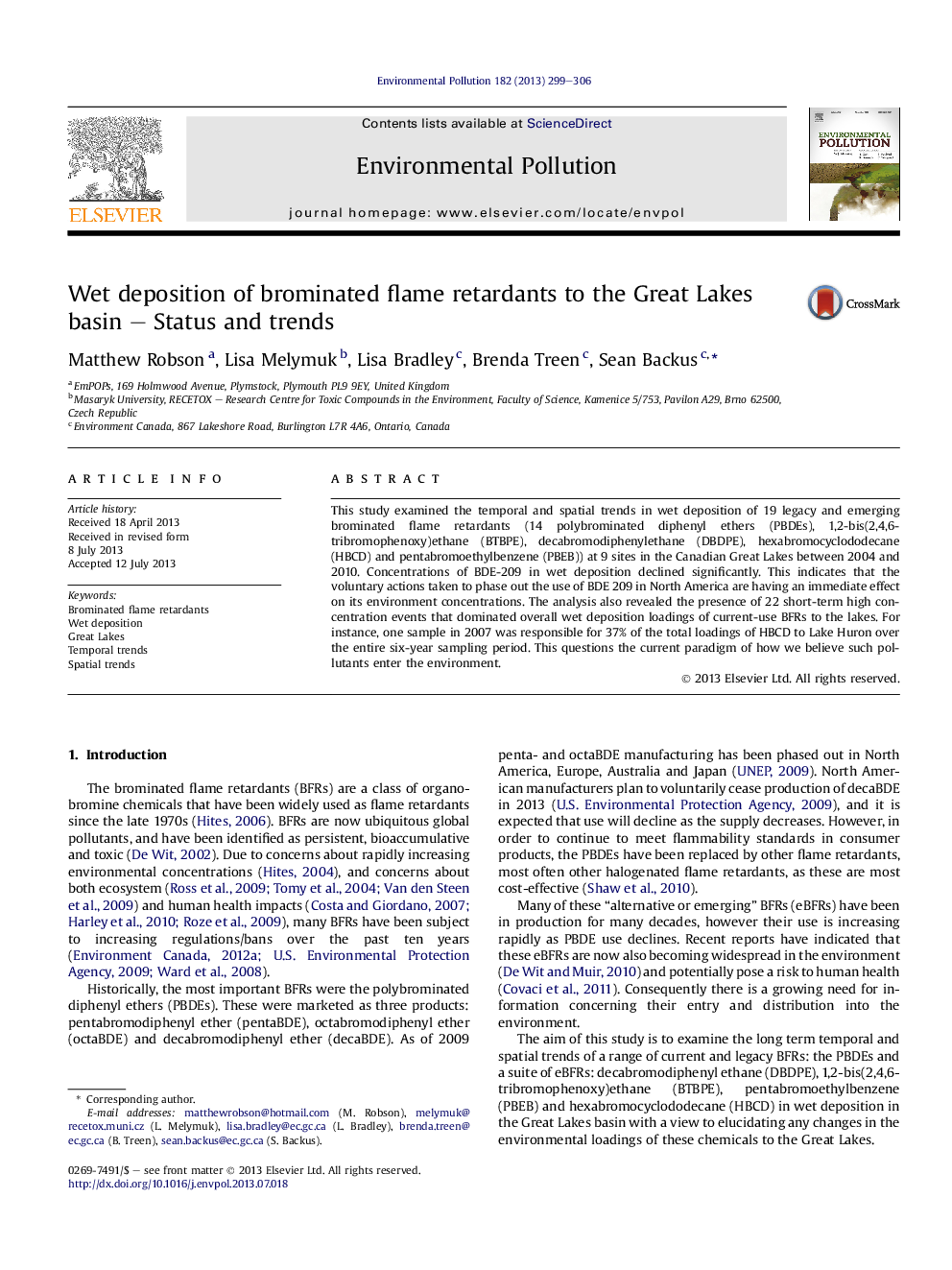| Article ID | Journal | Published Year | Pages | File Type |
|---|---|---|---|---|
| 6317089 | Environmental Pollution | 2013 | 8 Pages |
Abstract
This study examined the temporal and spatial trends in wet deposition of 19 legacy and emerging brominated flame retardants (14 polybrominated diphenyl ethers (PBDEs), 1,2-bis(2,4,6-tribromophenoxy)ethane (BTBPE), decabromodiphenylethane (DBDPE), hexabromocyclododecane (HBCD) and pentabromoethylbenzene (PBEB)) at 9 sites in the Canadian Great Lakes between 2004 and 2010. Concentrations of BDE-209 in wet deposition declined significantly. This indicates that the voluntary actions taken to phase out the use of BDE 209 in North America are having an immediate effect on its environment concentrations. The analysis also revealed the presence of 22 short-term high concentration events that dominated overall wet deposition loadings of current-use BFRs to the lakes. For instance, one sample in 2007 was responsible for 37% of the total loadings of HBCD to Lake Huron over the entire six-year sampling period. This questions the current paradigm of how we believe such pollutants enter the environment.
Related Topics
Life Sciences
Environmental Science
Environmental Chemistry
Authors
Matthew Robson, Lisa Melymuk, Lisa Bradley, Brenda Treen, Sean Backus,
